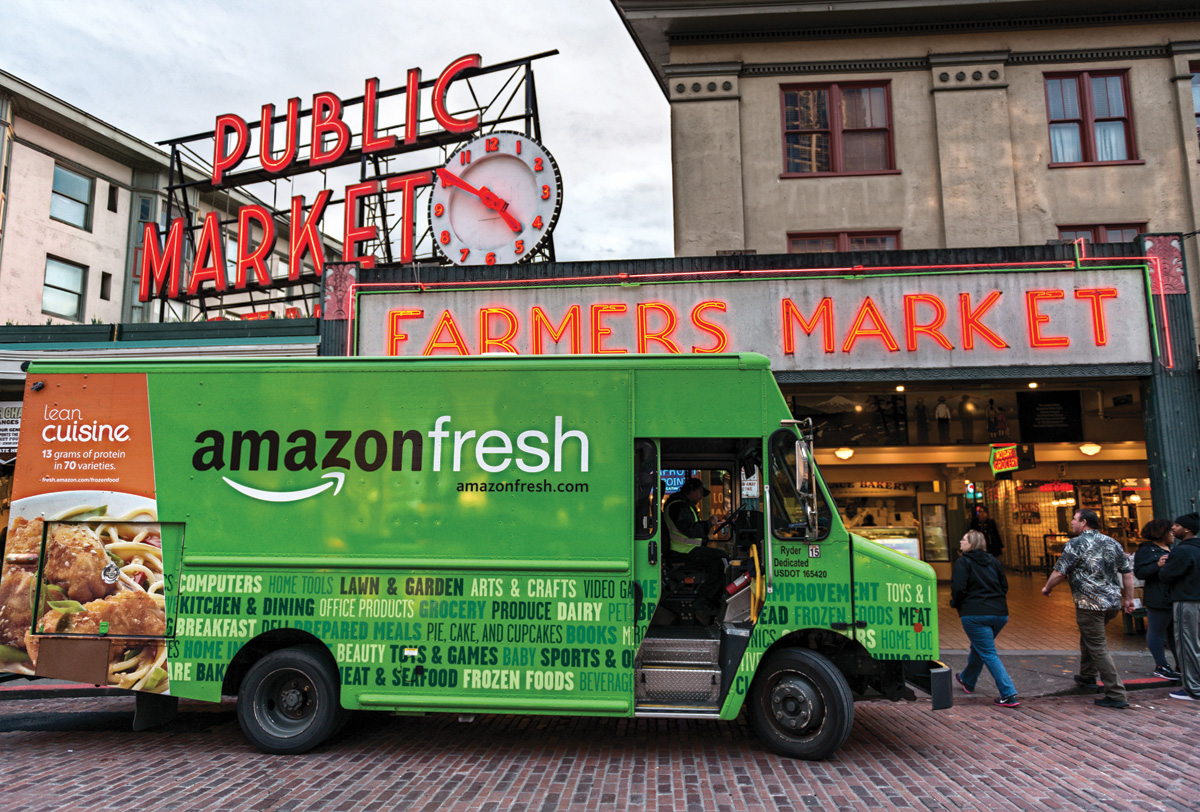Amazon might have been the biggest name in the grapple for delivery supremacy, but it never quite got its footing. The company announced Tuesday it would shut down its delivery service on June 24. “A small fraction of Amazon employees are affected by this decision, and many of those affected have already found new roles at Amazon,” the retail giant said in a statement. “Employees will be offered personalized support to find a new role within, or outside of, the company.”
Amazon Restaurants launched 2015 in Seattle. It seemed like a synergistic fit for the company’s industry-shifting platform, Amazon Prime. It would allow customers already signed up to its subscription service, famous for two-day shipping and no fees, to order meals, apart from products and groceries. It spread to more than 20 U.S. cities and eventually made its way to London. The U.K. project shut down in November.
Per Reuters, Amazon Restaurants was, at one point, led by the executive also in charge of Amazon’s ticketing business. It was later overseen by an executive running the company’s two-hour grocery delivery service, Prime Now.
Amazon’s food delivery goals aren’t entirely disintegrating, however. In took a stake in British online food delivery company Deliveroo in May, heading a $575 million fundraising.
The news Tuesday surged shares of GruhHub and Waitr Holdings. GrubHub, which has a market value of $6.3 billion and hit revenues of $324 million in the first quarter—up 39 percent, year-over-year—lifted north of 7 percent. Waitr upped 3 percent and has a market cap of $482.7 million. Uber, the parent of UberEats—the company McDonald’s deploys—crawled less than 1 percent to bring its value to $71.5 billion.
DoorDash raised $600 million last month to value it at $12.6 billion.
Amazon’s inability to gain traction with Amazon Restaurants could be credited to a wave of consolation in the food delivery industry. Jeremy Scott, an analyst at Mizuho Group, told CNBC that the industry could support two to three players at maximum.
READ MORE: Can Amazon conquer food?
He added, unlike some delivery-focused aggregators, this service was not a reflection of what Amazon is aiming to do from a broader perspective. It’s perhaps a better fit for the company to seek share through an established delivery service—rather than building its own—as it could be doing with the Deliveroo deal.
In the CNBC article, Scott also suggested the Amazon Restaurants’ shuttering could lead to Amazon potentially looking to acquire GrubHub “down the road should they want to take a leap step into the market.” In the short term, naturally, it’s good news for the top delivery players since it eliminates one main threat.
GrubHub, DoorDash, and UberEats hold more than 75 percent of the U.S. food delivery market share.
Scott noted that Amazon Restaurants had mixed results in its short turn, capturing single-digit market share in most markets. It never appeared to be a major priority for Amazon, either, he added.
As of last August, half of the markets had less than 300 restaurants signed, while New York City and Los Angeles/Orange County were the only two to break 1,000. With just shy of 700 restaurants in Seattle, Amazon Restaurants took the lion’s share of business in its hometown, comprising some 21 percent of food deliveries in the city, according to 2017 data from analytics firm Second Measure via Recode.
“Amazon deserves the credit in Seattle … but their expansion outside of Seattle has not been victorious to date,” Marcus Higgins, president and chief operating officer at EatStreet, told QSR earlier.
BTIG analyst Peter Saleh wrote in a Wednesday note, “We continue to believe that exclusivity is only temporary and expect restaurant brands to migrate toward multiple delivery platforms in 2019 and beyond similar to changes on-going at McDonald’s, Del Taco, and Papa John’s.”
“In our view, Amazon wasn’t an aggressive player in the segment with only one of our covered companies having partnered with the service,” Saleh added.
He also echoed Scott’s thought on Amazon’s possible future in the space.
“Given the growth opportunity in restaurant food delivery, and the capture of unique customer data, we believe Amazon is likely to buy [acquire] rather than build their own business in the U.S.,” Saleh wrote.
GeekWire first reported the news. It said Amazon was also closing Daily Dish, a workplace lunch delivery service it introduced in 2016. The company previously cut Amazon Restaurants jobs in January 2018 as well. At the time, sources told GeekWire Amazon had laid off 50 people from its food delivery service platform.
However, Amazon was expanding delivery to new cities as recently as early 2019 and had job openings in February.
Amazon still delivers groceries from Whole Foods via Prime Now in about 100 U.S. markets.












